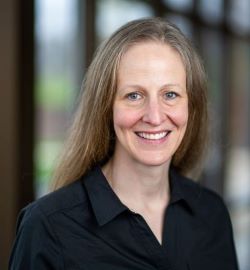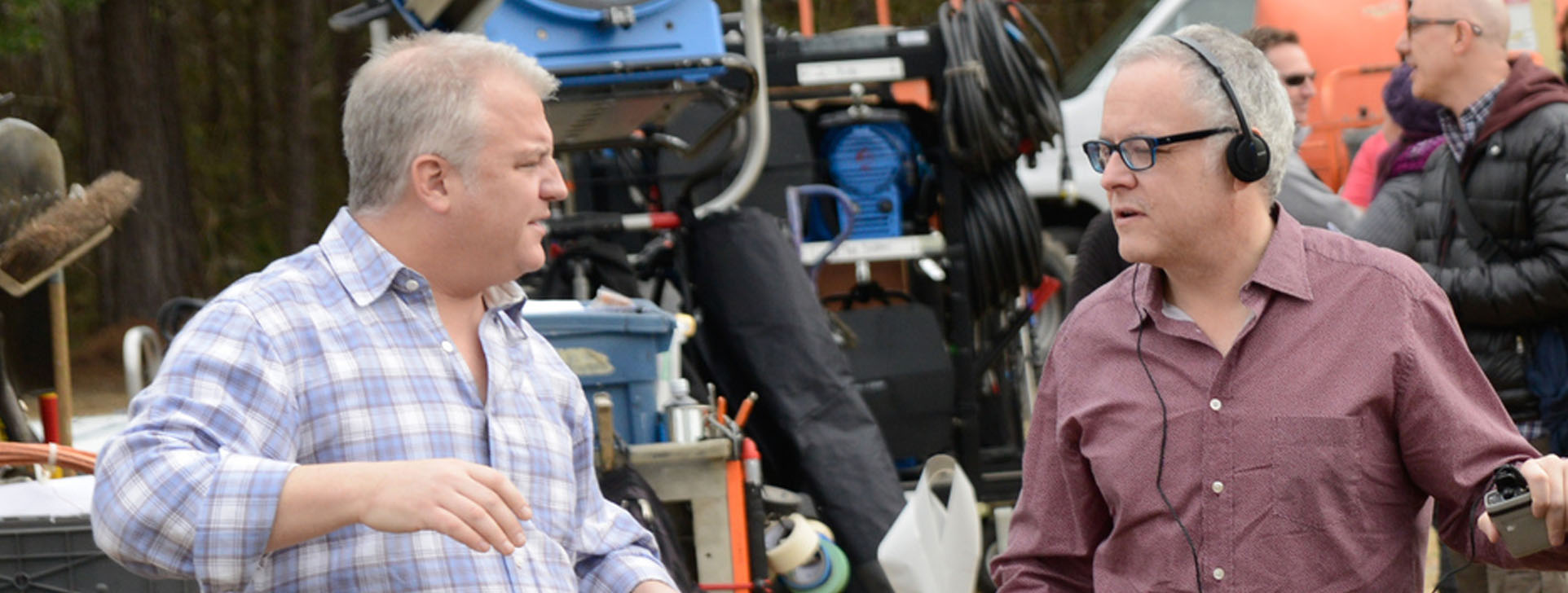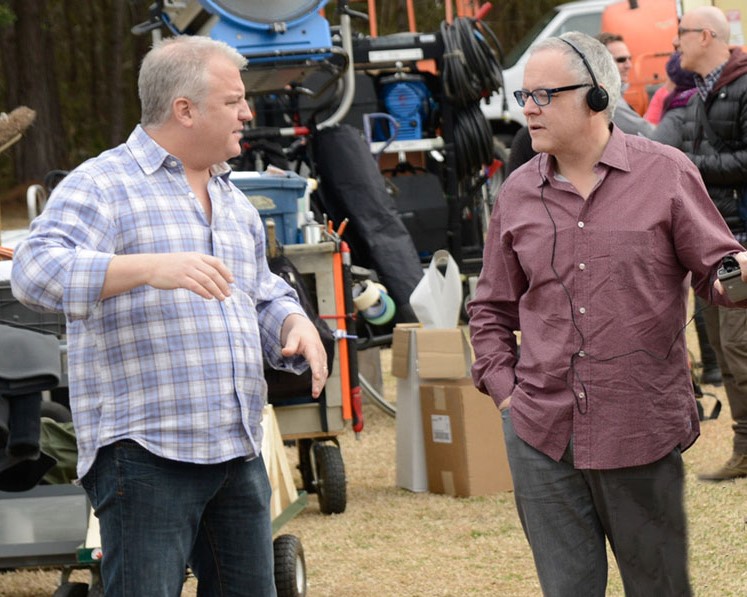Kara Zivin, PhD, MS, MA, MFA
Professor of Psychiatry and Health Management and Policy at the University of Michigan
 Media and Medicine Certificate Program Alumni Perspective
Media and Medicine Certificate Program Alumni Perspective
by Christina Lively
Kara Zivin is a Professor of Psychiatry and Health Management and Policy at the University of Michigan. Dr. Zivin’s research had focused on using social science to improve health for vulnerable populations. She has conducted work on vulnerable populations with mental health and substance use disorders, including pregnant and postpartum women, Veterans, and older adults. Dr. Zivin is also an author who has written about her experience with postpartum depression. She joined the Media and Medicine Certificate program in 2021, during the pandemic. I met with Dr. Zivin right before the winter holidays by zoom to ask her more about her research, her writing and her experience in the Media and Medicine Certificate program.
C Lively: I read in a previous profile you did for us that you first became interested in the Media and Medicine Certificate program though Suzanne Koven’s work. Can you tell us more about that?
K Zivin: I'm not a clinician, but I love the idea bridging art and medicine, and translating scientific or clinical words or experiences into layman's terms that can reach a wider audience. Suzanne does this in her writing.
Some people get mired in the weeds [of a research topic] and have a difficult time communicating about their goals or results. Other people conduct interesting narrative or qualitative work that may not have supporting scientific evidence.
I aim to operate at the intersection of science and story. Suzanne’s work provides a good example of that approach as do others who participated in the Media and Medicine program.
C Lively: I read some of your writing including a piece you wrote that really struck me. You mentioned in the piece “perhaps in the next ten years I will share my memoir essay collection, so I'll provide a solace for others in dark and lonely moments.” That was really powerful to me.
In reading your work I liked is how you bridge art and science, and you also bring narrative into the work. You mentioned that narrative is what drives policy. I read the Mathematica blog you did where you said that in a conference you shared slides, charts, and bar graphs, but when you showed pictures of yourself with your infant son and you said that audiences would put down their phones and look up during that part of the presentation, which again, creates a very powerful image. Can you talk more about how narrative can help make change?
K Zivin: We have all attended conferences where you sit there all day during numerous 20 minute talks with slides and bar graphs. On the off chance someone mentions a personal experience, it gives other people permission to do so as well, or to think about their own experiences. In the essay you referred to, I talked about looking into the audience and seeing a mix of people who had personal experiences with mental health conditions during pregnancy or postpartum, including both mothers and fathers. I saw someone with a kid bouncing on their knee in the middle of a conference. Forging those connections between speaker and audience can feel powerful.
I think narrative and personal experience can also play a part in legislation. For instance, what led to mental health parity? Paul Wellstone and Pete Domenici came together to create Mental Health Parity and Addiction Equity Act of 2008 -a Democrat and a Republican- because they each had family members with mental illness. I think that personal experience helped them work in a bipartisan way. Another example includes how John F. Kennedy sponsored the Community Mental Health Act of 1963 because of his sister, Rosemary.
So some politicians take narrative and personal experience and use it to make change. Others could learn from this process as well.
In my recent work, citing statistics on the number of women who die during or shortly after childbirth provides some information about a public health crisis. However, a narrative that discusses a specific woman who died with a picture of her baby and her husband in her home provides a stronger connection for the reader, even if both components include data about the problem.
Narrative medicine connects real people to public health problems.
C Lively: From your Mathematica blog post, you wrote: “Policymakers know this practice well. They champion classes that represent not only their values but their lived experiences.”
You also mentioned that “a story without evidence becomes an anecdote and data free conjecture. Data without narrative leads to glazed eyes and untuned ears.”
Did you always work with narrative in your scientific writing, or was his something you added after personal experience?
K Zivin: I have always included motivation from my personal experience with my research interests. Earlier in my career, I wrote about end-of-life issues after three of my grandparents died in a single year from different diseases during the end of my PhD program.
My training focused on quantitative rather than qualitative data, including medical records and billing data. But after my personal experience with perinatal depression surrounding my son’s birth, I started writing about my personal experience first and then sought out quantitative data. I thought, “Well, if seek to write a memoir, which may or may not get published, I might as well try to focus my attention on the same topic in my day job.”
After I allowed myself to focus on a topic that had substantial personal importance to me, I finally I got my first large NIH grant award. I have come to believe that because I had more passion about this topic than some of the other grants I applied for, I finally reached a broader a community of researchers and advocates.
Through this work, I have found a strong community focused on maternal mental health including advocacy organizations. This group of primarily women has only become strengthened in the current political environment that has resulted in more barriers accessing both mental and reproductive health care.
C Lively: Can you say more about shifting your focus to reproductive mental health?
K Zivin: I submitted 11 R-level NIH grants over a ten-year period, which included taking a few years off from writing NIH grants entirely. They failed for multiple reasons although I stand by the science behind them. I remain grateful not only that I finally received an award (and then others), but more importantly, that I can focus time, attention, and resources on this understudied yet highly prevalent condition.
I hope to publish a memoir on my personal experience with perinatal depression, including the perspective of both a patient and as a researcher. Later, I plan to write about my experience as a researcher as a female in academic medicine, including the substantial challenges in navigating a career funded entirely through grant dollars.
C Lively: You completed the Media and Medicine program from February 2021-June 2021. Can you tell us more about what made you take that program in addition to the MFA?
K Zivin: I started taking online writing courses in 2015, but I could not justify to myself the idea of completing another academic degree. But after my father died unexpectedly in 2018, I decided to get my MFA, and I loved becoming part of the creative writing community.
I knew it would help build up my creative writing portfolio so I published pieces like some of the ones that you read. I created my own website and joined social media websites to share not only my research but personal narrative.
C Lively: You mentioned in an earlier profile that you did for us that the Media and Medicine Certificate Program helped you get connected and to share ideas with others. Can you tell us more about how you think that experience was helpful?
K Zivin: In addition to my original connect to Suzanne Koven, I talked with Neal Baer, one of the program co-directors, and worked with Patrick Skerritt, the editor from STAT, who published the piece that I wrote about relating to Meghan Markle’s experiences with feeling suicidal during pregnancy. That publication came through connections through the program, and then I later published another article in STAT because I had developed a relationship with the editorial team during the certificate program.
I found it useful to hear about the different types of media that people could use to tell stories through op eds or personal narratives. Some certificate program participants did podcasts and a range of mediums people for their work.
C Lively: Please tell me more about the differences between your MFA in writing and the Media and Medicine program.
K Zivin: I complete an MFA in creative nonfiction writing, a low residency program focused on craft and creative work on a wide range of topics. The Media and Medicine Certificate program gave me more exposure to different modalities, not just writing, and to people focused on health-related topics.
I have found that if I do not have a structured program or even an online class, my creative writing falls to the wayside because of the demands of my day job as a researcher and professor. I think the Media and Medicine Certificate program provided the chance for me to get feedback. Its structure, learning, and reading provided different viewpoints related to media and health.
Most of the people in the MFA program had backgrounds in teaching English. The Media and Medicine program had a different audience and a different purpose, including people involved in medicine and public health. The Media and Medicine program included mid-career individuals in a curated audience, closer to the audience that I operate in at a medical school.
This year, I received an invitation to present at the National Governors Association meeting in Detroit. The roundtable convened for New Jersey Governor Phil Murphy’s 2022-2023 Chair’s Initiative on Strengthening Youth Mental Health and a roundtable on maternal and infant health, a top priority of New Jersey First Lady Tammy Murphy.
I had the chance to meet Gretchen Whitmer and some of the other governors, and they asked me to present both the scientific and more narrative side of maternal mental health.
I looked at this as an opportunity to educate policymakers and potentially influence decisions they make around postpartum Medicaid coverage or other programs.
I might not have had this opportunity if I only had my published research and quantitative data because others could provide similar information. But my personal experience combined with my research led them to seek me out. That’s just one example of the power of narrative.
C Lively: Speaking of different media, I noted in several of your essays that you talk about crocheting. Do you feel that creative work can be restorative?
K Zivin: I do find creative work restorative and have spent a lifetime doing needlework, and in the last 15 years, doing crochet – mostly blankets. I have always viewed these types of crafts as a blend of art and science in that they involve planning or graphing projects and counting stitches (as opposed to freeform drawing or painting) but can create a tangible and beautiful product in the end.
In the last year, my team started hosting mini writing workshops with my research collaborators, including faculty and staff. I think it’s helpful to use a different part of your brain, and to decompress from some of the stresses of a research career. It’s also a good community building activity where you get to know your coworkers in a more personal manner. I hope to continue this work and build ongoing connections with collaborators through shared interests in creative writing, reading, and debriefing about our experiences as a group.
C Lively: Thank you so much for speaking with me today.
K Zivin: Thank you for reaching out. Good to talk to you.
This interview has been edited and condensed.
Learn more about the Media and Medicine: How to Tell Stories That Make a Difference program.

